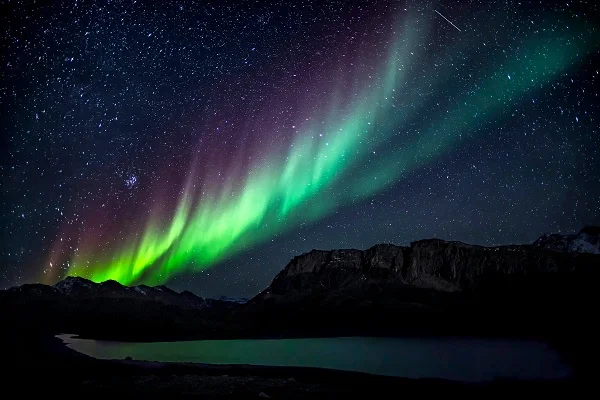
Tonight, November 28, 2024, the Northern Lights may be visible across parts of the continental United States due to favorable geomagnetic conditions. The NOAA Space Weather Prediction Center has issued a G1 (Minor) geomagnetic storm watch for tonight and a G2 (Moderate) watch for Friday, November 29, as a result of increased solar activity earlier this week.
Where Can You See the Northern Lights?
The aurora borealis may be seen as far south as:
- G1 Storm (Nov. 28): Likely visible in states such as Washington, Wisconsin, and New York.
- G2 Storm (Nov. 29): Could extend visibility to states like Idaho, Michigan, and possibly further south.
In the event of an unexpectedly strong G3 (Severe) storm, the Northern Lights could extend further south, reaching states like Illinois and Oregon.
Why Are the Northern Lights Visible Now?
This week’s solar activity, including an M9.4-class solar flare on November 25 and subsequent coronal mass ejection (CME), has intensified the solar wind interacting with Earth’s magnetic field. The sunspot responsible for this activity is Earth-facing, increasing the likelihood of more flares and CMEs in the coming days.
How to View the Northern Lights
- Check Aurora Forecasts: Monitor NOAA’s 30-minute Aurora Forecast
The Science Behind the Northern Lights
The aurora occurs when charged particles from the sun collide with Earth’s magnetic field, accelerating towards the poles and energizing atmospheric gases. These gases emit light in colors such as green (oxygen) and red (higher-altitude oxygen).
Why Solar Activity is High
The sun is currently in the peak of its 11-year solar cycle, known as solar maximum, with heightened magnetic activity. This results in more sunspots and powerful events like flares and CMEs, leading to frequent and intense geomagnetic storms.
If conditions hold as predicted, tonight and tomorrow could offer breathtaking auroral displays even in areas unaccustomed to seeing the Northern Lights. Wishing you clear skies for this celestial spectacle!